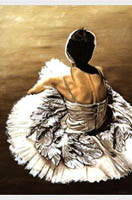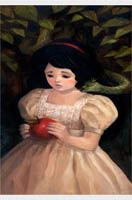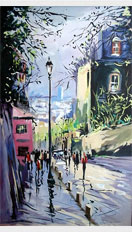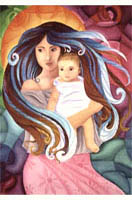Jules Adolphe Aime Louis Breton
Jules Adolphe Aime Louis Breton (May 1, 1827 - July 5, 1906) was a 19th-century French Realist painter. His paintings are heavily influenced by the French countryside and his absorption of traditional methods of painting helped make Jules Breton one of the primary transmitters of the beauty and idyllic vision of rural existence.
Early life and training
Jules Breton was born on May 1, 1827 in Courrieres, a small Pas-de-Calais village. His father, Marie-Louis Breton, supervised land for a wealthy landowner. His mother died when Jules was 4 and he was brought up by his father. Other family members who lived in the same house were his maternal grandmother and his uncle Boniface Breton. A respect for tradition, a love of the land and for his native region remained central to his art throughout his life and provided the artist with many scenes for his Salon compositions.
His first artistic training was not far from Courrieres at the College St. Bertin near St. Omer. He met the painter Felix de Vigne in 1842 who, impressed by his youthful talent, persuaded his family to let him study art. Breton left for Ghent in 1843 where he continued to study art at the Academy of Fine Arts with de Vigne and the painter Hendrik Van der Haert. In 1846, Breton moved to Antwerp where he took lessons with Baron Gustaf Wappers and spent some time copying the works of Flemish masters. In 1847, he left for Paris where he hoped to perfect his artistic training at the Ecole des Beaux-Arts.
In Paris he studied in the atelier of the Michel-Martin Drolling.
He met and became friends with several of the Realist painters,
including Francois Bonvin and Gustave Brion and his early
entries at the Paris Salon reflected their influence. The Salon
displayed his painting Misery and Despair in 1849 and Hunger in
1850-51. Both paintings have since been destroyed. After Hunger
was successfully shown in Brussels and Ghent, Breton moved to Belgium
where he met his future wife Elodie. Elodie was the daughter of
his early teacher Felix de Vigne. In 1852, Breton returned
to France. In 1853 he exhibited Return of the Reapers, the first
of numerous rural peasant scenes influenced by the works of the
Swiss painter Leopold Robert. Breton's interest in peasant
imagery was well-established from then on and what he is best known
for today. In 1854, he returned to the village of Courrieres
where he settled. He began The Gleaners, a work inspired by seasonal
field labor and the plight of the less fortunate who were left to
gather what remained in the field after the harvest. The Gleaners
received a third class medal, which launched Breton's career. He
received commissions from the State and many of his works were purchased
by the French Art Administration and sent to provincial museums.
His 1857 painting Blessing of the Wheat, Artois was exhibited at
the Salon the same year and won a second class medal.
Fame
He continued to exhibit throughout the 1870s and into the 1880s and 1890s and his reputation grew. His poetic renderings of single peasant female figures in a landscape, posed against the setting sun, remained very popular, especially in the United States. Since his works were so popular, Breton often produced copies of some of his images. He was extremely popular in his own time, exhibiting numerous compositions at the Salons that were widely available as engravings. He was one of the best known painters of his period in his native France as well as England and the United States. In 1886, he became a member of the Institut de France. His brother Emile, an architect by training, and his daughter Virginie were also painters.







